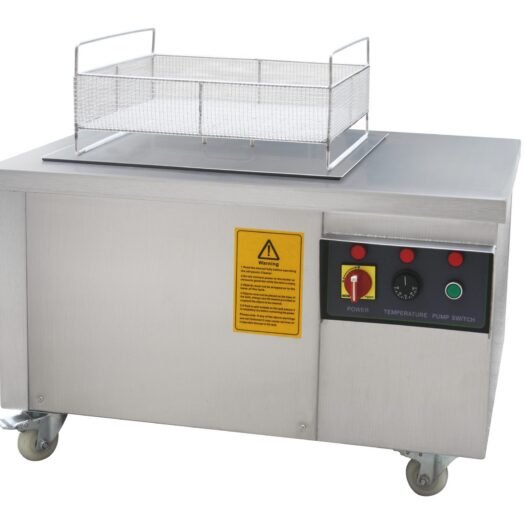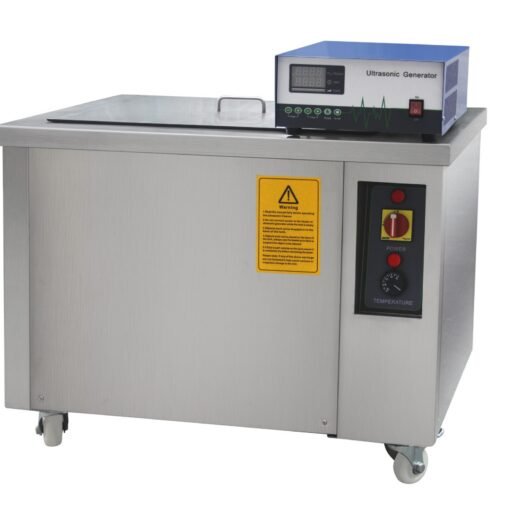Ultrasonic bath cleaning is based on the cavitation effect caused by the high-frequency ultrasonic wave vibration signals in the fluid. Microscopic bubbles are formed, and they implode violently causing cavitation which creates an intense scrubbing action on the surface of the item being cleaned. The bubbles are small enough to penetrate microscopic crevices, cleaning them thoroughly and consistently.
Ultrasonic cleaning is extremely effective at removing dirt and grime which would normally require tedious manual cleaning by hand. It has been used to clean a wide variety of instruments and mechanical parts such as carburetors, returning them to almost “like new” condition without damage to delicate parts.
Industrial ultrasonic bath with bubble easy for cleaning. accelerated peeling of crops attached to the surface.
Features:
1, Welded cleaning tank made of 2mm stainless steel SUS 304/316 tank, Drip-proof housing made of stainless steel SUS 304 , acid-proof and anti-corrosive.
2, Industrial grade for 24 hours of continuous working.
3, Filling level mark: well recognizable imprint for the minimum filling level of the cleaning fluid.
4, Inclined tank bottom, for improved cleaning results through the ideal distribution of ultrasound.it also facilitates the cleaning of the tank, caking of residues is avoided.
5, Multi-direction castors with brake.
6,0-60 or 0-99 mins digital timer or continuous operation.
7, Optional in two frequencies:40kHz and 28kHz.
8, Ultrasonic power can be adjusted from 0 to 100%.
9, Temperature adjustable from 30 to 110 degree.
10, Heating can be used non-stop independent of the cleaning function.
11, Including stainless steel 304 basket and take-off lid.
12, Custom size and options according to the customers’ request.
Bubbling ultrasonic cleaning uses cavitation bubbles induced by high-frequency pressure (sound) waves to agitate a liquid. The agitation produces high forces on contaminants adhering to substrates like metals, plastics, glass, rubber, and ceramics. then the object receives high performance.










